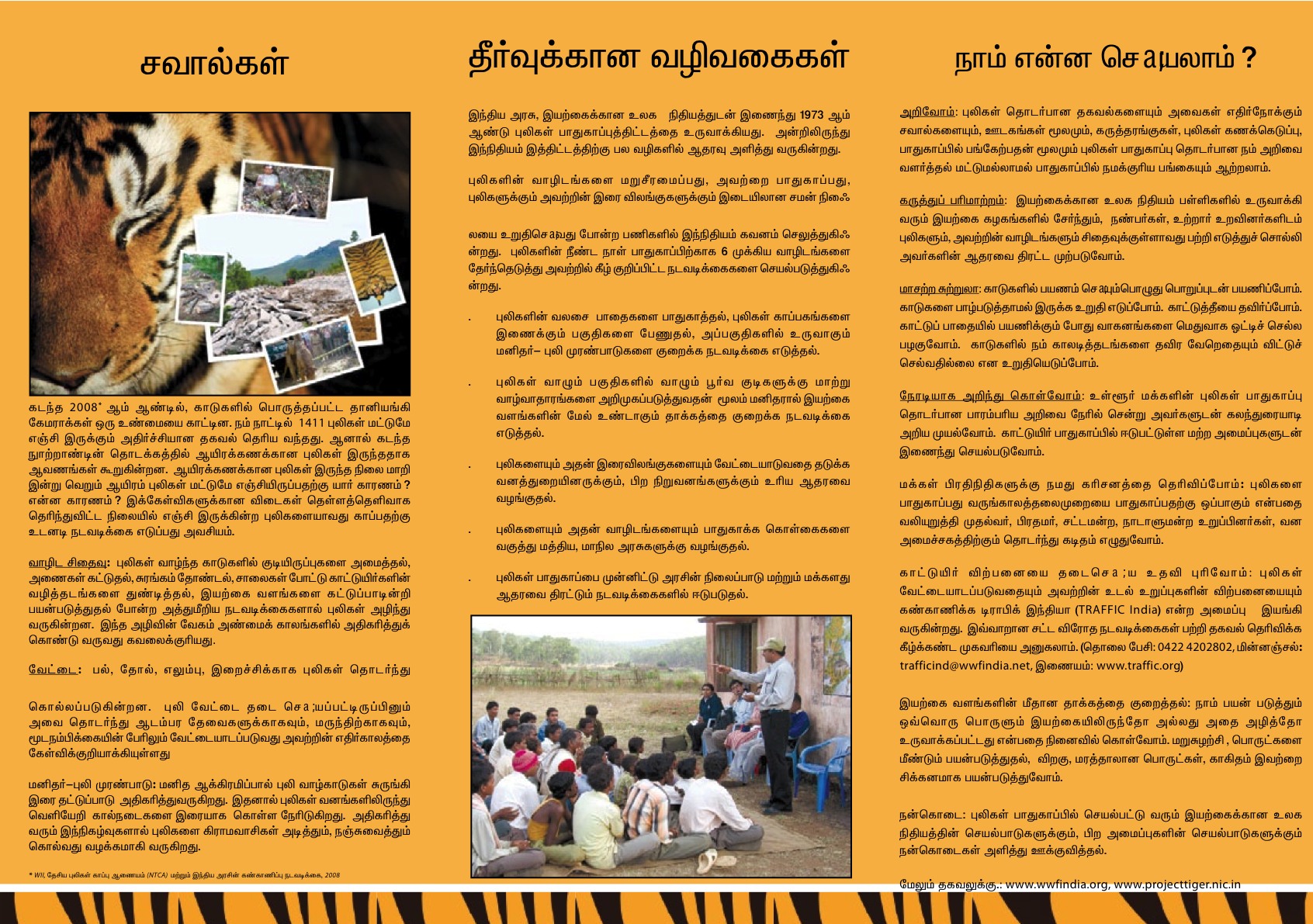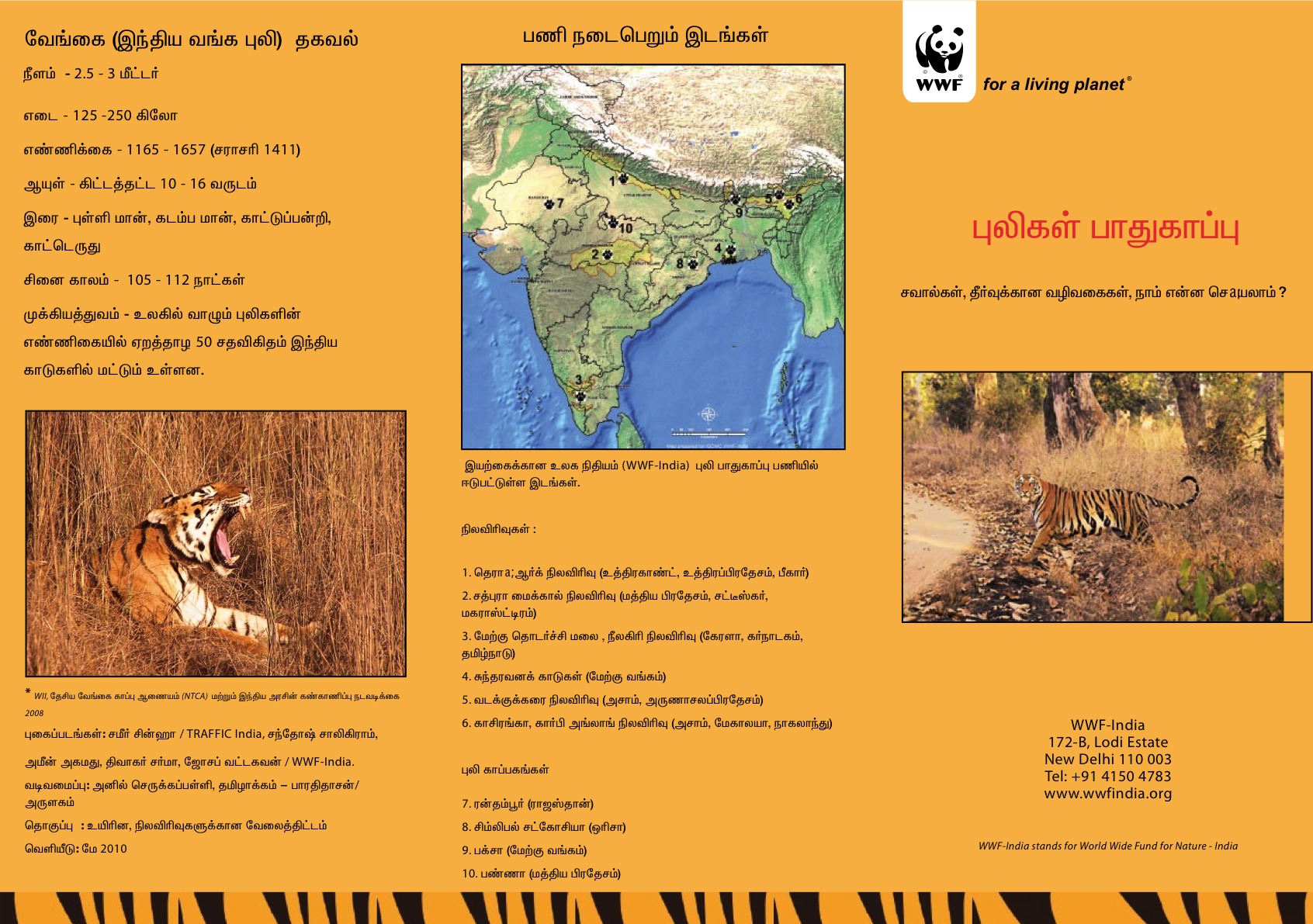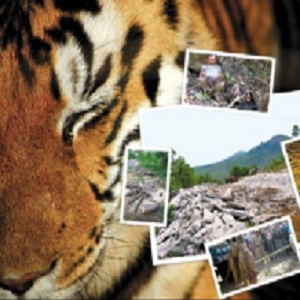Date: Feb 25-27, 2011
Venue: PSG Auditorium and Topslip, Anamalai Tiger Reserve
Organisers: Arulagam, PSG College of Arts and Science, Wildlife Conservation Society and Centre for Wildlife Studies (CWS).
Target Group: Media Students from 16 Colleges and Universities of Tamil Nadu and Pondicherry.
Purpose: Sensitizing about the role of media in Tiger Conservation.
Medium: Presentation, Field trips, Group Discussions, Screening Films, interaction with wildlife scientist, photographers and film makers.
Funding / Collaboration: CWS
Inaugural session:
Wildlife Conservation Society – India Program sponsored workshop on “Sensitizing the media on conserving tigers and their habitat in Tamil Nadu” was inaugurated at PSG COLLEGE OF ARTS AND SCIENCE, Coimbatore on the 25th of February, 2011.
Dr.K.M. Chinnadorai, Principal in charge, PSG College of Arts and Science, Coimbatore welcomed the audience.
Dr.Raja Jayapal, Conservation Scientist, WCS - India program made a brief report on Wildlife Conservation Society-India Program project in Tamil Nadu.
Poster release on TIGER CONSERVATION followed through and was released by Mr.G.Rangaswamy, Managing Trustee, PSG Institutions and Dr.Ravi Chellam, Country Director, Wildlife Conservation Society-India program.
Mr.G.Rangaswamy addressed the audience on the need for conservation and the civil and political support conservation initiatives required.
Dr.Ravi Chellam delivered the keynote address and centered his talk on Human-wildlife relationship and conflict. The reason for conflict and mitigating measures were also discussed. He also emphasized on the lack of information based conflict management measures.
The inauguration came to a close with the vote of thanks by C.R.Jayaprakash, Assistant Professor, Dept., of Communication, PSG College of Arts and Science, Coimbatore. He was also the project coordinator of the workshop.
Workshop:
The first session of the workshop commenced with a presentation of "Wildlife photography versus Conservation Photography" by Dr. R.Tolstoy, Associate Professor, PSG Institute of Medical Sciences and Research, Coimbatore - 641 004. Dr.Tolstoy spoke of how photography could effectively help conservation and have minimal impact on the environment it works on. He also spoke of Tribal welfare and the impact of a happy tribal population on the environment. Environmentally sensitive behavior and scientifically informed conservation photography was emphasized.
The session came to a close with a talk by Mr. Mohammad Ali, Member of The Nature Trust, Mettupalayam, on ‘Myths, Media and Wildlife reporting’. Responsible journalism and well researched reporting on wildlife issues were discussed in detail. The need to understand ones own environment, its structure and function was encouraged. Ali’s talk set a preamble to the workshop were in participants were encouraged to discern the information gathered during the workshop and come up with a unbiased perception of wildlife and conservation.
Workshop continued at Anamalai Tiger Reserve (ATR)
The workshop at Anamalai Tiger Reserve began with the screening of “The Truth about Tigers” by Shekar Dattatri, Wildlife Filmmaker and Conservationist, to an audience of 30, all were participants selected from 16 Colleges and Universities of Tamil Nadu and Pondicherry. The movie covered some significant aspects of Tiger conservation, the need to conserve Tigers and the issue of conservation at large.
The documentary followed with a discussion. Dr Ravi Chellam and Shekar Dattatri spear headed the discussion by bringing forth a number of conservation issues and media’s perception and projection of such issues. Responsible and informed journalism was announced to be the need of the hour.
A number of ways by which media could bring forth a well researched piece of information on marauding conservation issues were discussed. The participants raised a number of questions on issues ranging from the types of forests found in India, tiger-favored ecosystem, radio-collaring of tigers, tiger census, human-tiger conflict and human perception of conservation and tigers.
Dr.V. Manoharan, Forest Veterinary Officer, Coimbatore and Thangaraj Panneerselvam, Forest Range Officer, Ullandy, Analmalai Tiger Reserve met with the participants. Mr.Thangaraj Panneerselvam made a short presentation on Anamalai Tiger Reserve while Dr Manoharan spoke of wild-animal disease control and treatment.
Day 2: On 26th February, 2011 the participant’s begun the workshop with a trek to Karian Shola, in Anamalai Tiger Reserve. The participants spotted a few endemic birds and noted a number of bird sounds. One of the groups spotted the endemic Great Indian Hornbill and the Racket tailed drongo. Malabar giant squirrel, Indian Gaur, and Nilgiri langurs were the few mammals sighted.
A talk by Mr. Shekar Dattatri followed. Mr. Dattatri elaborated on the role of Forest department as essential guardians of forest and their inevitability in the conservation system. Human- animal conflict, conflict control, mitigation measures, and human perception of conservation were amongst the important topics discussed. The role of media in reporting such conflicts, unbiased reporting and conservation issue discussion by the media were discussed using contemporary illustrations and examples.
Dr. Chellam delivered the second lecture followed by a discussion. He argued upon the serious lack in conservation training for forest officials and for the lower grade forest watchers and anti-poaching guards. Resource provision in terms of monetary benefits and other concessions as beneficial encouragements for the lower grade forest watchers and anti-poaching guards was also emphasized. Dr Chellam spoke briefly about the WCS Initiative and its research interest.
The participants then took a tour around Parambikulam Tiger Reserve, Kerala, which lies adjacent to ATR. This was to give the participants a general idea of the topography of the reserve and of the mythical “jungle” itself. The participants witnessed the reality of managed forests and the human influence it had to cope with. The tour included a visit to the famous Kannimara teak: the Virgin tree with its own history and folk perceptions.
The day ended with the screening of Shekar Dattatri’s documentary ‘Save our Sholas’. The discussion that followed saw participants come up with some exciting and intriguing questions on shola forests and its importance in sustaining both the wild and the human world. Before the film, C.R.Jayaprakash, Project Coordinator of the workshop presented images of faulty management of forest resources and strain on forest resources which are illegally promoted in the name of Eco Tourism.
Day 3:
The day began with a field tour into the Parambikulam Tiger Reserve. A number of birds including the Orange and black flycatcher, Male Paradise flycatcher and Malabar Pied hornbills were sighted. Mammals such as the Giant Malabar Squirrel and Indian Gaur, Spotted Deer, Sambar Deer were also sighted.
K. Vijayananthan IFS, Wildlife Warden, Parambikulam Tiger Reserve, and H.Basavaraju, IFS, Field Director, Anamalai Tiger Reserve briefed the audience on the history of Parambikulam and Anamalai Tiger Reserve. Conservation issues such as poaching, poacher-forest watcher clashes, wildlife traffic, sale nexus and wildlife laws were also discussed. The participants interacted with the officials and raised a number conservation issues including the building of check dams and its implications on the environment and the ecosystem.
Dr. Raja Jayapal, Conservation Scientist, WCS delivered the concluding talk. Research as an aspect of conservation issue reporting and the consequences of negligence of research was discussed. Unbiased issue discussion and a follow up of the issue were encouraged as an effective tool that could aid in conservation. Tiger as an efficient flag ship species for conservation and thus the need to sensitize media on the conservation of Tigers was emphasized.
The workshop ended with a feedback session headed by Dr. Ravi Chellam. The participants candidly spoke of the few aspects of the workshop that needed rethinking and readjustments while lauding many others they appreciated, such as the availability and approachability of conservation connoisseurs like Dr Chellam and Mr. Dattatri.
C.R. Jayaprakash gave away the vote of thanks thus calling the workshop to a close. He announced special prizes to the participants who take the message gathered from the workshop to the Media. Any news items in mainline dailies, Short films/Documentaries or even Posters on Tiger Conservation made by the participants would be awarded with prizes worth Rs.5,000. The cut off date for submission was announced as May 31, 2011.
Follow up:
The first entry in this category, a poster by George Joseph Thengumootil, I MA Communication, PSG CAS was received in the first week of March, 2011. As an Early Bird entry offer, this participant stands selected to the second Workshop which is planned in the first week of May, 2011.
Working Journalists from the Print and Electronic Media of Tamil Nadu will be invited/Selected for the second residential workshop which will be an improvement on the first camp.





